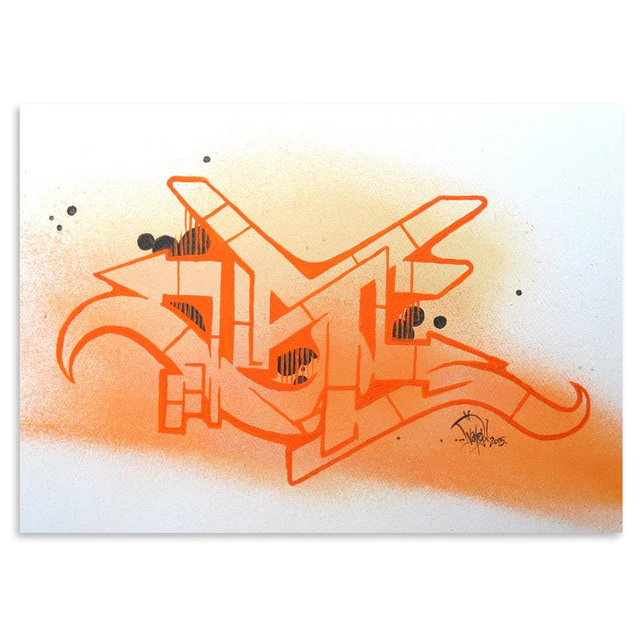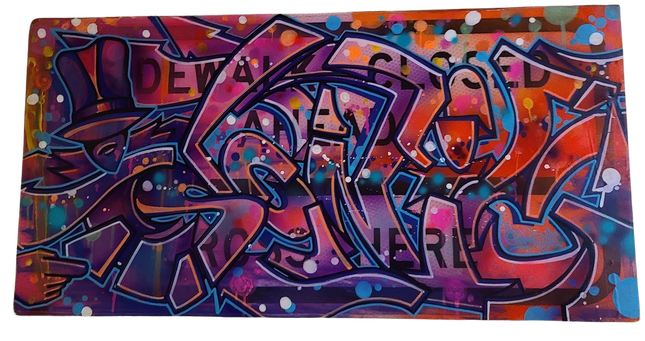
Graffiti art is a form of visual expression that utilizes public spaces, typically urban settings, as its canvas. The term "graffiti" originates from the Italian word "graffiato," which means "scratched." The art form can include various techniques such as painting, drawing, stenciling, and wheatpasting, but the most common method is spray painting. Graffiti art can take many forms, from simple tags (stylized artist signatures) to complex murals and intricate designs. It often carries social or political messages, representing the voice of marginalized communities or serving as a medium for creative self-expression. It has been both celebrated as an authentic art form and criticized as a form of vandalism due to its illegal nature in many cases. Over the years, graffiti art has evolved and gained more recognition within the art world. Renowned graffiti artists like Banksy, Keith Haring, and Jean-Michel Basquiat have made significant contributions to the mainstream acceptance of graffiti as a legitimate art form. These artists, among others, have showcased their work in galleries and museums, as well as on city streets, bridges, and buildings. The rise of street art festivals and the increasing number of commissioned murals have helped legitimize graffiti art and highlight its cultural significance. However, the debate about whether graffiti should be considered art or vandalism still persists, as the legality and ethics of unauthorized graffiti remain contentious. Spray paint is an important tool and material used in graffiti art and pop art. It allows artists to create bold, vibrant, and expressive works of art that can be seen in public spaces and galleries alike. In graffiti art, spray paint is often the primary medium used to create large-scale murals and street art. Graffiti artists use a variety of spray paint cans with different colors and nozzle sizes to create intricate designs, lettering, and characters on walls, buildings, and other surfaces. They also use various techniques such as stenciling, layering, and blending to create different effects and textures. Spray paint is also a popular medium in pop art, particularly in the works of artists such as Andy Warhol and Keith Haring. These artists used spray paint to create bold, graphic images that commented on contemporary culture and society. Warhol, for example, used spray paint to create his iconic images of Campbell's soup cans and Marilyn Monroe, while Haring used it to create his signature figures and symbols. In addition to its expressive qualities, spray paint is also valued for its versatility and accessibility. It is relatively inexpensive and widely available, making it a popular choice for artists of all backgrounds and skill levels. However, the use of spray paint in public spaces is often controversial, with some viewing it as a form of vandalism rather than art. Nonetheless, spray paint remains a crucial tool for many graffiti and pop artists, allowing them to create bold and powerful works that challenge and inspire audiences.

